PRESTO PLANS
Sent straight to your inbox
CLICK HERE TO ACCESS
Sign up to receive 10 ready-to-use ELA resources your students will love!
10 FREE ELA RESOURCES
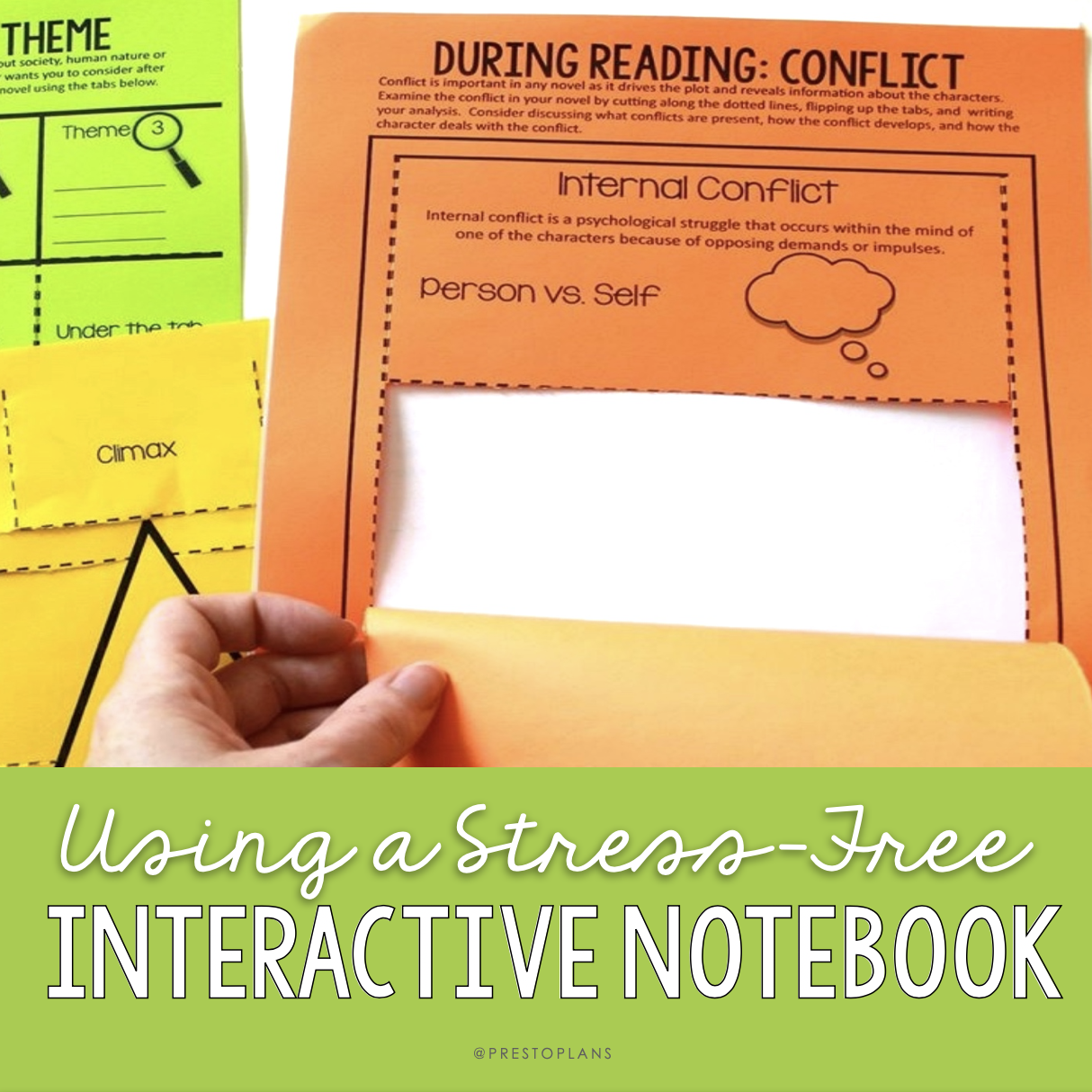
Using Interactive Notebooks With Novels & Short Stories
When I first heard about interactive notebooks (INBs), I was intrigued but hesitant. I always love trying new teaching methods, but I wasn’t entirely sure how I would sell the novel interactive notebook model to my middle or high school ELA students. I could predict the impending questions: Glue? Pencil crayons? Are we back in elementary school? I knew if I wanted to make this work in my English class, I would need to find a way to make interactive notebooks seem more substantial and mature.
Not only did I want my students to jump on board with the idea, but I also wasn’t prepared to lose too much class time to assemble the notebooks; I was already a bit behind the other classes who had already started my novel unit. I looked around online (mostly on Pinterest) and discovered tons of excellent interactive notebooks and templates, but most required more assembly time than I was willing to spare (for cutting, folding, gluing, etc). Getting through the novel unit in my allotted time was going to be tricky if I had to devote so much class time to this process.
SAVING TIME WITH INTERACTIVE NOTEBOOKS
My goal was to have an interactive notebook that I could simply print, hole-punch, and distribute to my classroom. So, I did what I always do when I can’t find the exact teaching resource I am searching for. I sat down on my couch, blared some music, and got to work. I wanted to make sure of the following:
- It doesn’t require students (or myself) to have ninja scissor skills. Each page would only have a couple of easy, simple cuts.
- It doesn’t require glue or tape—only a couple of staples per page. Stapling takes MUCH less time. I am also fairly sure I only have one glue stick that is all dried out from the early 2000s.
In the end, I was left with an interactive notebook that only required a few cuts along the dotted lines of each page and a couple of staples attaching each page to a piece of loose-leaf in binders. This way, when each of the tabs is pulled up, there is a place for students to write underneath.
If you plan to use this method, ask students to cut on the dotted lines as soon as the pages are distributed. Doing it this way takes no more than 20 minutes (for most students). This also makes it so you don’t have to break out the scissors over and over again during the unit.
What I love most about this interactive notebook is that it can be used with ANY novel. It’s broken down into three sections.
INTERACTIVE NOTEBOOK: BEFORE READING
Before I get students to even begin reading the novel, I have them complete interactive notebooks for pre-reading activities. The first thing I do is have them make predictions about the plot. They have to use the title, book cover, and random passages from the novel to do this. I ask them questions like…
- “Look at the cover of the novel. Based on the images, what predictions can you make about the plot/genre?”
- “Read the blurb about the novel on the back/inside the book jacket. What new information do you now have about the novel?”
The second thing I get students to do is to get them to do some research on the author’s biography and build background knowledge. I then get them to write about what they’ve learned about the author’s personal life, their career highlights, and interesting quotations by them, for example. By becoming more invested in the author, students will be more interested in their writing
INTERACTIVE NOTEBOOK: DURING READING
While students are reading the novel, I get them to complete “during-reading” interactive notebook activities. These prompt students to pay closer attention to important elements of the novel while they are still in the process of reading the text. This is where I get students to reflect on the following literary elements:
- Plot diagram: students flip up the taps and fill in the main events of the plot in the correct section.
- Character: students analyze the protagonist based on their speech, thoughts, relationship with others, actions, physical appearance, etc.
- Conflict: this is where I get students to consider what conflicts are present, how the conflict develops, and how the protagonist deals with conflict.
- Mood & Tone: after explaining the distinction between the two, I have them analyze the mood and tone using 3 words to describe the former and two to describe the latter.
- Theme: they analyze three different themes developed in the novel.
- Figurative Language: students choose 4 types of figurative language, find examples of them in the novel, and explain why they think the author used these particular devices.
- Setting: students write important quotes that describe the setting in the novel and explain why it is significant underneath the flap.
You can have students complete these at various points during the novel unit. For example, if you are focusing on a major theme in a chapter, students may work on the theme page that day (and so on). I find this to be a great way to get students to connect the important details in any given text to the broader picture of the novel.
INTERACTIVE NOTEBOOK: AFTER READING
After students have finished reading the novel, I get them to complete interactive notebook pages meant to solidify their comprehension of the text. You might get students to make text-to-world, text-to-self, and text-to-text connections here, for example. I usually ask students to make an after-reading essay outline. However, once they’ve finished reading, I also like to give students the opportunity to respond more creatively to the novel.
Maybe you’ll have students explore a character by making an interactive notebook photo album or by shopping for a gift for them. They could also explore the theme or the plot by making a reading musical playlist where they choose songs that relate to the novel. This is a great opportunity for differentiation. There are lots of creative activities you can do here, but you don’t need to do them all! You might want to just pick a few that you think would resonate with your students.
Search the blog for what you are teaching
GIVEAWAYS
sent straight to your inbox!
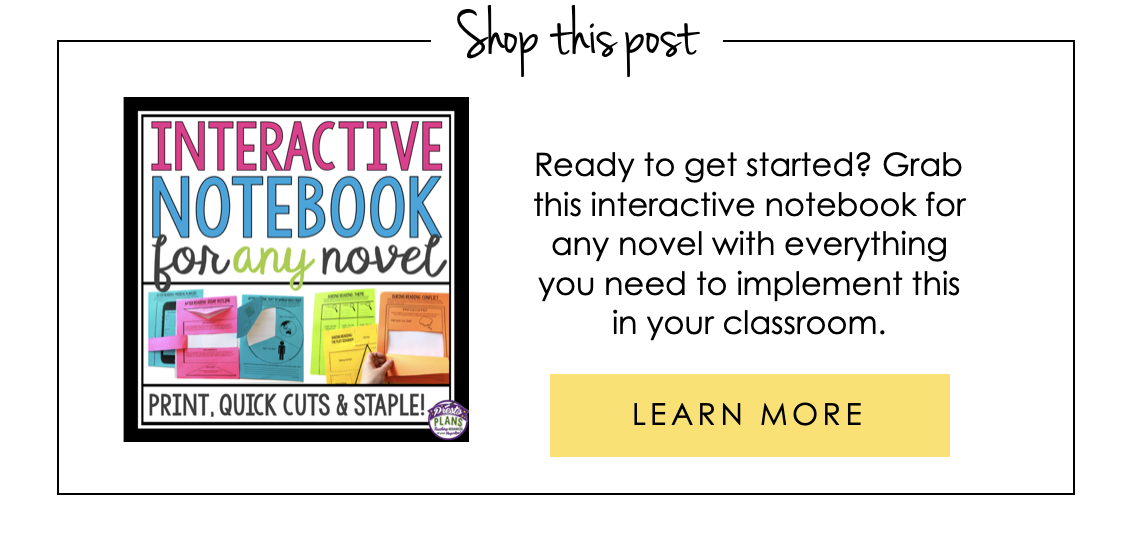
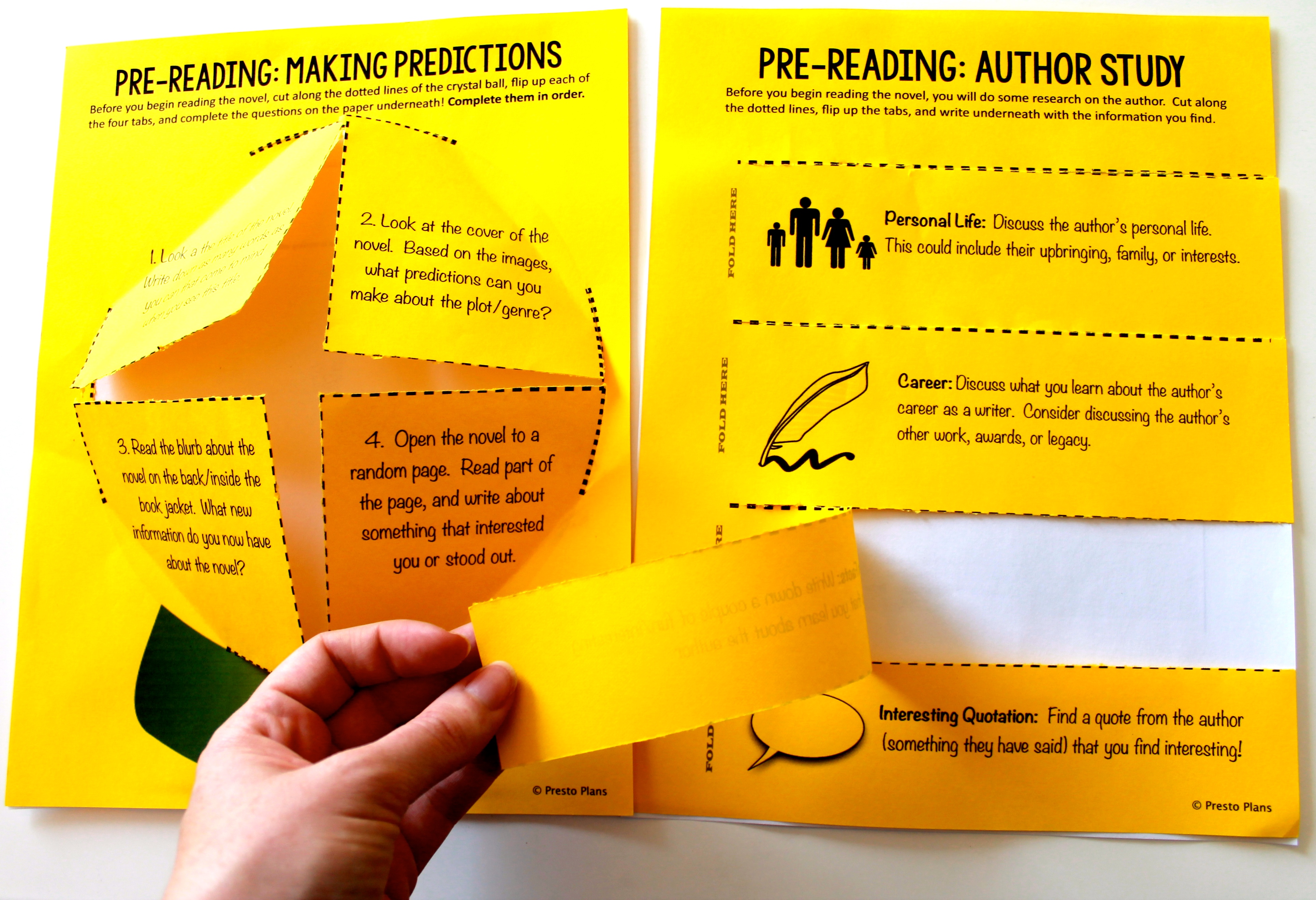
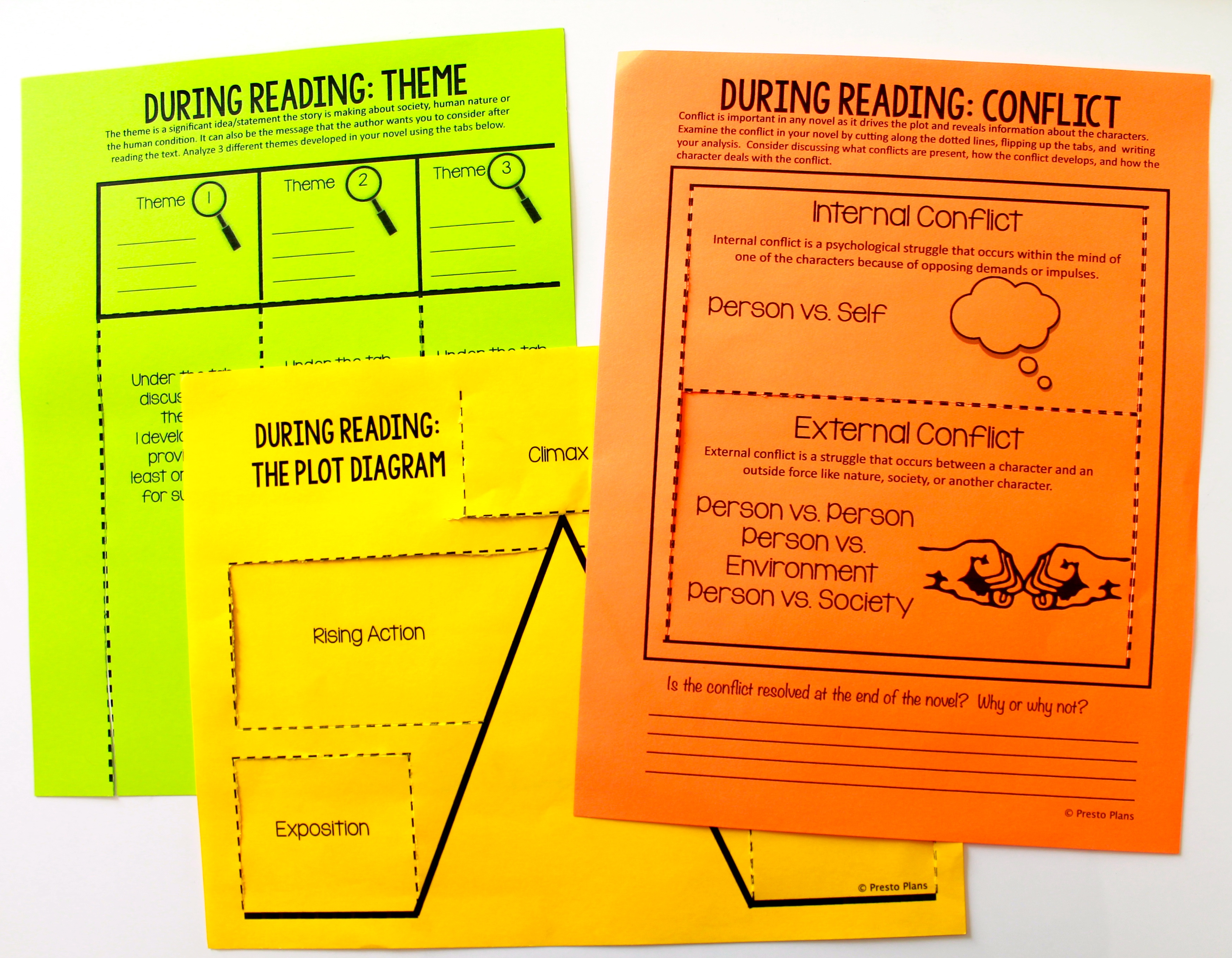
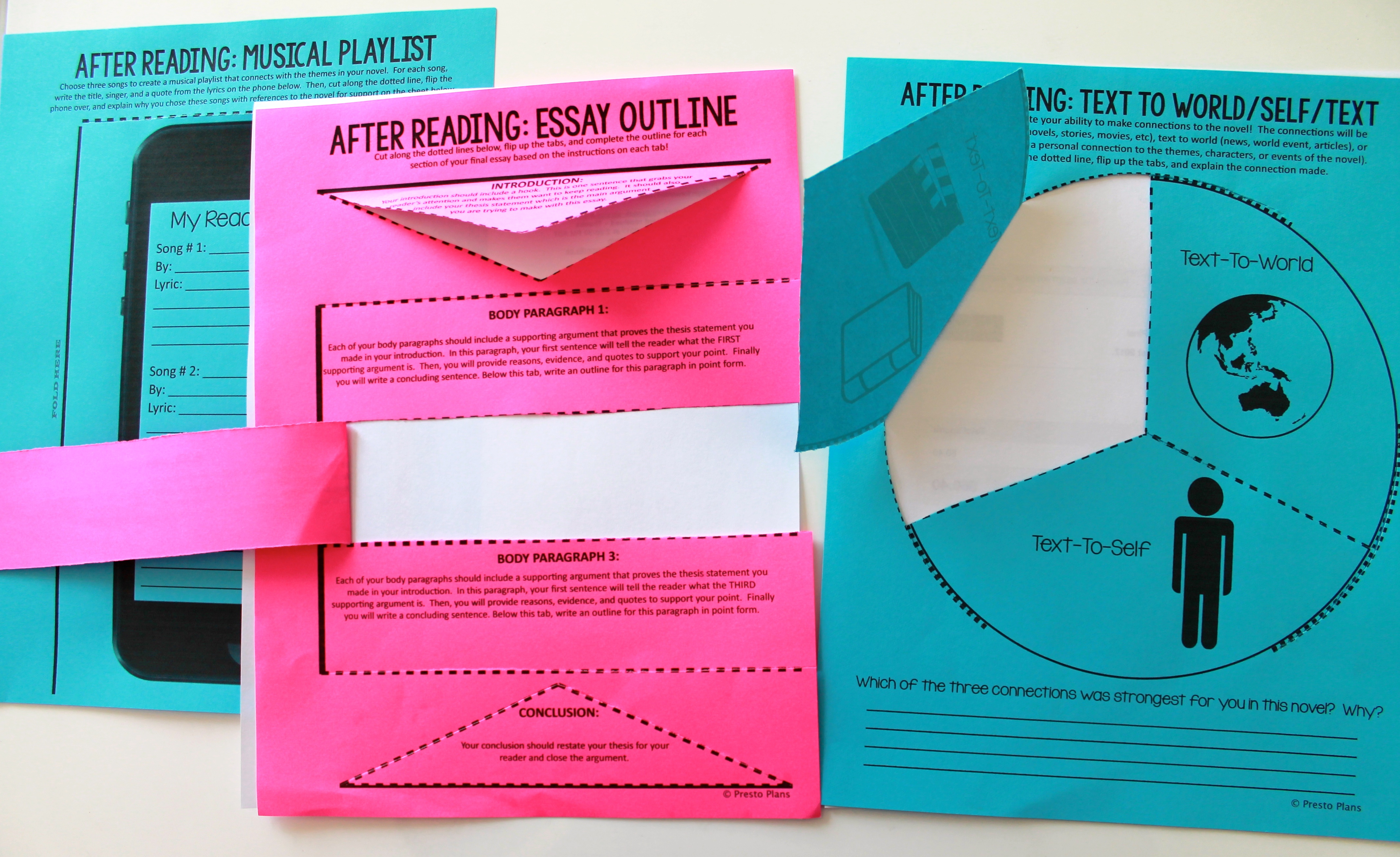
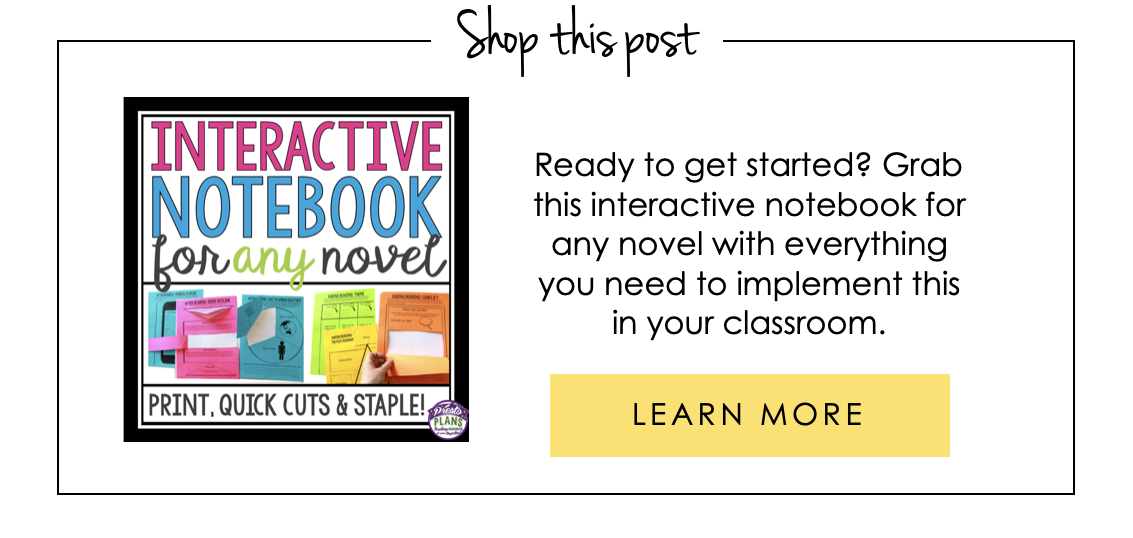
share this post